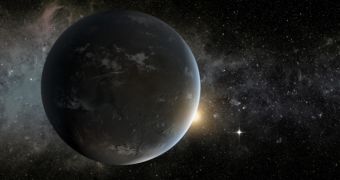Astronomers at the Massachusetts Institute of Technology (MIT) in Cambridge have recently published a new study that demonstrates a new technique for establishing the weight of a distant extrasolar planet. The research group was able to calculate the alien world's weight by looking at its atmosphere.
Experts say that this study may open the door for a new batch of investigations that could potentially uncover Earth-analog planets faster than possible with existing methods. The work marks the first time when atmospheric characterization allowed scientists to calculate the weight of a distant world.
The investigation was conducted by MIT planetary scientists Julien de Wit, and supervisor Sara Seager, who holds an appointment as a professor of planetary science and physics at the Institute. Together, they were able to determine the weight of the hot Jupiter-class exoplanet HD 189733b.
One of the reasons why it is so important to know the mass of an exoplanet is that this measurement can reveal whether or not a candidate world is rocky like Earth, or gaseous like Jupiter or Saturn.
The new technique, which the team developed for use on future planet-hunting telescopes, involves studying tiny variations in the amount of starlight observatories see after a planet moves in front of its star. A very tiny amount of that light passes through the atmosphere of alien worlds.
De Wit and Seager says that it is possible to determine the mass of the exoplanet moving in front of its parent star by analyzing the spectrum of light released by its parent star. This is possible because atmospheres usually act as light filters, blocking some wavelengths and allowing others to pass.
The type of filtering that occurs depends on a variety of factors, including atmospheric pressure, temperature and gravitational pull. It is the latter that researchers will be trying to analyze, since a planet's gravitational tug is intimately related to its mass, Nature reports.
The reason why HD 189733b was chosen for this proof-of-concept study is that the mass of the alien world had already been established in previous studies, through other methods. By applying the new technique, the MIT team was able to independently confirm the established values.
This study method could potentially be used on the European Space Agency's (ESA) Exoplanet Characterization Observatory (EChO), a spacecraft that is currently being considered for launch beyond 2024. ESA will have a meeting to select one of five potential missions next month, and EChO is one of the candidates.

 14 DAY TRIAL //
14 DAY TRIAL //